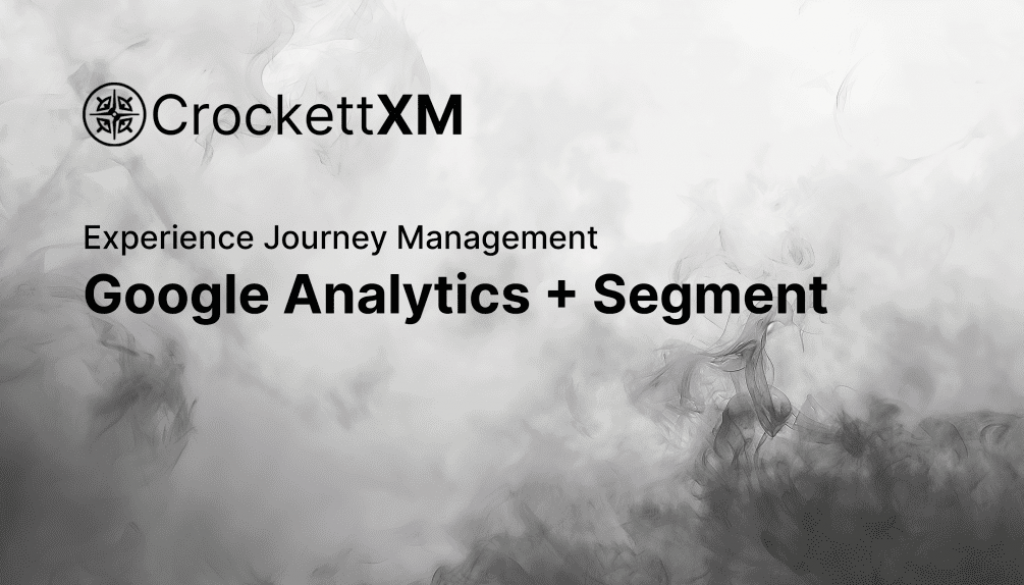Journey Tech: Segment + Google Analytics
There are a number of technology platforms and tools that have been built by vendors to help organizations understand and respond to the journeys that their customers are having with their organizations. These tools tend to be very expensive and complex to implement, but they aren’t the only game in town. In fact, organizations have some great lower cost technologies that can also be used, but most experience practitioners and teams don’t know about them, or haven’t heard how they can be applied to their use cases.
Segment and Google Analytics are two powerful tools that, when used together, can significantly enhance digital marketing strategies through effective journey orchestration. This article explores how integrating these tools can provide a comprehensive solution for tracking, analyzing, and optimizing the customer journey, ultimately leading to improved customer engagement and increased conversions.
Google Analytics
Google Analytics is a widely-used analytics service that helps businesses analyze visitor traffic and understand user behavior on their websites. It provides insights into how users interact with site content, tracks conversions, and measures the effectiveness of online marketing campaigns.
Segment
Segment acts as a customer data platform (CDP) that collects, stores, and routes user data to various analytics and marketing tools. It simplifies data collection and management by providing a single API to track customer data across multiple touchpoints and then funneling this data into services like Google Analytics.
Integrating Google Analytics with Segment
Integrating Google Analytics with Segment allows businesses to leverage the strengths of both platforms. Segment collects and organizes customer data from various sources, including web and mobile interactions, and then sends this information to Google Analytics for detailed analysis. This integration enables more granular and sophisticated tracking of user behaviors and funnel analysis, enhancing the ability to orchestrate customer journeys effectively.
Benefits of Using Google Analytics and Segment for Journey Orchestration
Enhanced Data Collection and Quality
Segment enhances the data collection process by capturing real-time interactions across various platforms and sending them to Google Analytics. This ensures that the data in Google Analytics is comprehensive and reflects all user interactions, not just those that occur on a website.
Improved Segmentation and Personalization
With richer data from Segment, Google Analytics can perform more detailed segmentation. Marketers can identify specific user behaviors and tailor marketing strategies to different segments. Personalization improves as businesses can target users with messages and offers that are more likely to resonate with their specific interests and behaviors.
Streamlined Workflow
Using Segment to handle data collection and integration simplifies the technical workload. Businesses can set up data collection once through Segment, and then seamlessly integrate this data with Google Analytics without additional coding. This streamlined workflow saves time and reduces the potential for errors.
Real-Time Analytics
The combination of Segment’s real-time data collection and Google Analytics’ analytical power allows businesses to observe and react to customer behaviors as they happen. This capability is crucial for optimizing marketing campaigns and improving user engagement in real time.
Implementing Google Analytics and Segment for Journey Orchestration
Step 1: Set Up Segment
Implement Segment to collect data across all user touchpoints. Configure Segment to track all relevant events, such as page views, form submissions, and ecommerce transactions.
Step 2: Integrate with Google Analytics
Connect Segment to Google Analytics by setting up Google Analytics as a destination in Segment. This will route all collected data into Google Analytics, where it can be analyzed further.
Step 3: Configure Tracking and Reporting
In Google Analytics, set up goals, funnels, and custom segments to analyze the customer journey. Use the data provided by Segment to create detailed reports that offer insights into user behavior and campaign effectiveness.
Step 4: Analyze and Optimize
Regularly review the analytics to understand how users interact with the site and respond to different marketing strategies. Use these insights to refine the customer journey, aiming to improve user experience and increase conversions.
Barriers to Implementation
Despite the benefits, some organizations face challenges in implementing journey analytics. These include data integration issues, privacy concerns, lack of expertise, and the complexity of managing data across multiple platforms. Additionally, aligning team efforts and overcoming resistance to new technologies can pose significant hurdles.
By addressing these challenges and leveraging the combined strengths of Google Analytics and Segment, businesses can create a powerful framework for understanding and optimizing the customer journey. This integrated approach not only enhances the ability to track and analyze customer interactions but also significantly improves the effectiveness of digital marketing efforts.

